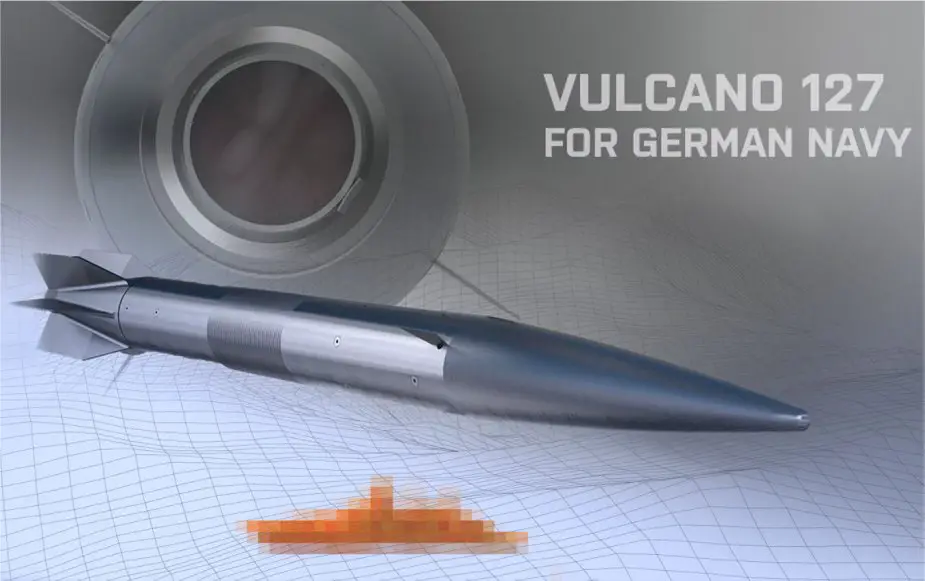According to a PR published by Leonardo on November 9, 2022, the German Navy successfully completes the operational suitability test with frigate F125 – fielding starts now.
Follow Navy Recognition on Google News at this link
 Artist rendering of the Vulcano 127 guided ammunition. (Picture source: Diehl Defence)
Artist rendering of the Vulcano 127 guided ammunition. (Picture source: Diehl Defence)
According to Italian and German governments’ requirements, the companies Diehl Defence and Leonardo developed and qualified the precision-guided ammunition family Vulcano 127 and 155 mm. Compatibility with all 127 mm and 155 mm weapon systems is ensured.
During the fielding, the German Navy successfully completed the operational suitability test of the Vulcano 127mm guided ammunition, fired from frigate F125 with Leonardo’s 127/64 Lightweight naval gun.
This comprises the whole ammunition flow in the weapon, including programming and firing with proof of range and precision under operating conditions.
The Vulcano ammunition is designed to achieve extended ranges of 70 km for Vulcano 155 and 80 km for Vulcano 127 in conjunction with unique accuracy against stationary and moving targets.
Besides the basic configuration with a Height of Burst (HoB) sensor, other configurations were qualified, with terminal homing sensors SAL (Semi-Active Laser) and FarIR (Far Infrared), which are deployed against stationary and moving single targets with highest accuracy.
This makes the Vulcano family the most accurate artillery ammunition for land and naval applications worldwide.
The powerful multi-role, Insensitive High-Explosive (IHE) warhead with pre-fragmented tungsten splinters is most effective against soft targets, vehicles, semi-armored vehicles, infrastructures, and all typical infantry command posts.
Thereby, not only the Italian Navy will be equipped with Vulcano 127 guided ammunition as these successful tests pave the way for the German Navy to adopt the system as well.
About the F125 frigate
The F125 Baden-Württemberg-class frigates are a series of frigates of the German Navy, which were designed and constructed by ARGE F125, a joint-venture of Thyssen-Krupp and Lürssen.
They are primarily designed for low and medium-intensity maritime stabilization operations, where they are supposed to provide sea-to-land tactical fire support, asymmetric threat control at sea, and support of special forces.
The frigates have a length of 149,52 m (490 ft 7 in), a beam of 18.80 m (61 ft 8 in), and a draft of 5.40 m (17 ft 9 in). They can reach a top speed of 20 knots (37 km/h; 23 mph).
It should be possible to deploy Baden-Württemberg-class frigates for up to two years away from homeports with an average sea operation time of more than 5,000 hours per year (that's nearly 60%) which includes operation under tropical conditions.
For this reason, a combined diesel-electric and gas arrangement has been chosen for the machinery. This allows the substitution of large and powerful diesel engines for propulsion and sets of smaller diesel generators for electric power generation with a pool of med-sized diesel generators, reducing the number of different engines.



